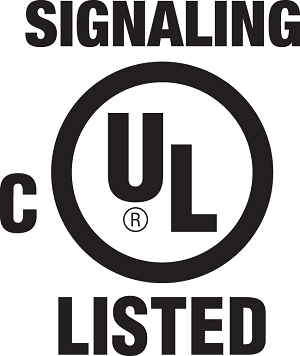Fire safety in your home
Being prepared is your best defence against a fire in your home. Reduce your family's risk of fire-related injury or death by following these safety tips.
On this page

Smoke alarms save lives. You can reduce your family's risk of fire-related injury or death by installing the right number of smoke alarms in the right places in your home, and by keeping them in good working order.
According to the manufacturer’s instructions, you should:
- check,
- test, and
- clean them.
If you need help or advice with your smoke alarms, contact your local fire department for assistance.
Other important actions:
- Install smoke alarms in each bedroom, in the hallway outside the bedrooms and on each level of your home, including the basement in line with the appropriate Provincial or Territorial and Federal Fire and Building Codes.
- Read and follow every step of the manufacturer's directions when you install your smoke alarms.
- Test your smoke alarms every month to make sure that they are working properly.
- Follow the manufacturer's directions for cleaning your smoke alarms.
- Change the batteries as often as recommended by the manufacturer.
- Replace any smoke alarm that is more than ten years old.
- Investigate any false alarms, and have an escape plan in case of a real fire.
Certification marks
When buying smoke alarms at retail stores or through online websites, it is important to look for products that meet Canadian safety standards.
Smoke alarms with a Canadian certification mark have been tested by laboratory professionals. The mark indicates that the product meets all applicable safety standards set out in Canadian regulations.
Certification marks must be found on:
- the smoke alarm, and
- the product packaging.
Here are some common Canadian certification marks you may find on smoke alarms and their packaging:
For products sold online, the product description may also indicate if the smoke alarm is certified to Canadian safety standards. If you are not sure, ask the seller. If the seller cannot confirm that the product is certified to Canadian safety standards and bears a Canadian certification mark, don't take the risk, only purchase products that have this required information.
Find out more about buying consumer products online.
Fire extinguishers
Purchase a fire extinguisher for your home and keep it handy in the event of a small fire. Make sure you know what to look for when buying a fire extinguisher for your home.
- Always check for certification marks, such as ULC.
- Fire extinguishers indicate the type of fire that they are designed to extinguish with a letter and the size of fire that they can extinguish with a number. The higher the number rating on the fire extinguisher, the more fire it puts out.
- It is important to make sure you can comfortably hold and operate the fire extinguisher you buy.
- To use the fire extinguisher, remember the order of operations: P.A.S.S.
- Pull – the pin
- Aim – at the base of the fire
- Squeeze – the trigger
- Sweep – back and forth at the base of the fire vigorously.
- If you have a rechargeable fire extinguisher, have it serviced and inspected according to the manufacturer’s instructions, and recharge it after each use.
- Install your fire extinguisher near an escape route and away from potential fire hazards.
Did you know?
Smoking is one of the leading causes of house fires. Smokers should regularly check their furniture and bed for fallen embers, which can smoulder for hours before bursting into flames. Make sure to properly extinguish any lit items and never leave them unattended.
Electrical products
Household electrical products can pose health or safety risks, including fire, if used incorrectly. Always use electrical appliances or products in line with the manufacturer’s instructions.
Find out more about electrical product safety.
Lighters and Matches
Children who have access to lighters and matches may start fires that could lead to injuries or death. Reduce the risk to your family by doing the following:
- Keep lighters and matches out of the sight and reach of children at all times.
- Teach children about the dangers of lighters and matches.
- Check under beds and in closets for burnt matches.
- Burnt matches may be evidence that your child is playing with fire.
- Keep in mind that:
- lighters are appealing to children especially when they look like toys;
- not all lighters are child-resistant; and
- child-resistant does not mean child-proof.
Candles
Candles can be a serious fire hazard if not used properly. There are a number of things you can do to reduce the health and safety risks when burning candles.
- Use flameless candles whenever possible.
- Extinguish all candles before going to bed or leaving the room. Never leave burning candles unattended.
- Do not extinguish a candle with water. Snuff it instead.
- Do not burn candles on or near anything that can catch fire (like curtains, bedding, combustible decorations, and clothing).
- Keep candles out of the reach of children and pets.
- Place burning candles somewhere they cannot be knocked over.
- Cut candle wicks short to prevent high flames.
- Use sturdy candle holders that won't easily tip over.
- Avoid placing lit candles on flammable surfaces.
Flying lanterns
Also known as sky lanterns or Chinese lanterns, these lanterns are typically composed of paper on a bamboo or wire frame, with a fuel cell made of a waxy flammable material. They are constructed to resemble a small hot-air balloon and are often used at celebrations and festivals. For safe use, follow these tips.
- Check with your local fire department before using these products because some municipalities have banned them.
- Read and follow the instructions and safety information on the packaging before launching.
- Use a flying lantern that is tear resistant, with a non-drip fuel cell.
- Be aware that flying lanterns use an open flame. There is a risk of fire if the lantern comes into contact with combustible materials.
- Use flying lanterns with caution. They can travel a long distance.
- Do not add additional fuel or other accelerants to the fuel cell before lighting.
- Do not tie items or add any weight to the lantern.
- Do not modify flying lanterns for use indoors. They are for outdoor use only.
- Do not use lanterns during windy conditions. Use only during calm weather with no more than a slight breeze.
- Keep water or a fire extinguisher nearby.
General tips
- Take the time to create a personalized home emergency evacuation plan and practice it with your family to avoid panic and confusion in the event of a fire.
- Stop, drop, and roll if your clothes catch fire.
- If you have any questions about fire, fire safety, or fire prevention, do not hesitate to contact your local fire department.
- Find out more about preventing carbon monoxide poisoning.
Page details
- Date modified:







